Château de Blois' history spans over a thousand years, serving as a favored home for several French kings and queens, including Louis XII, François Ier, and Catherine de Médicis. The castle’s unique architecture reflects four distinct periods, medieval, Gothic, Renaissance, and classical, each represented in its wings surrounding the main courtyard. It was here that pivotal events in French history unfolded, such as the assassination of the Duke of Guise in 1588. After falling into neglect, the château was restored in the 19th century under the direction of architect Félix Duban.
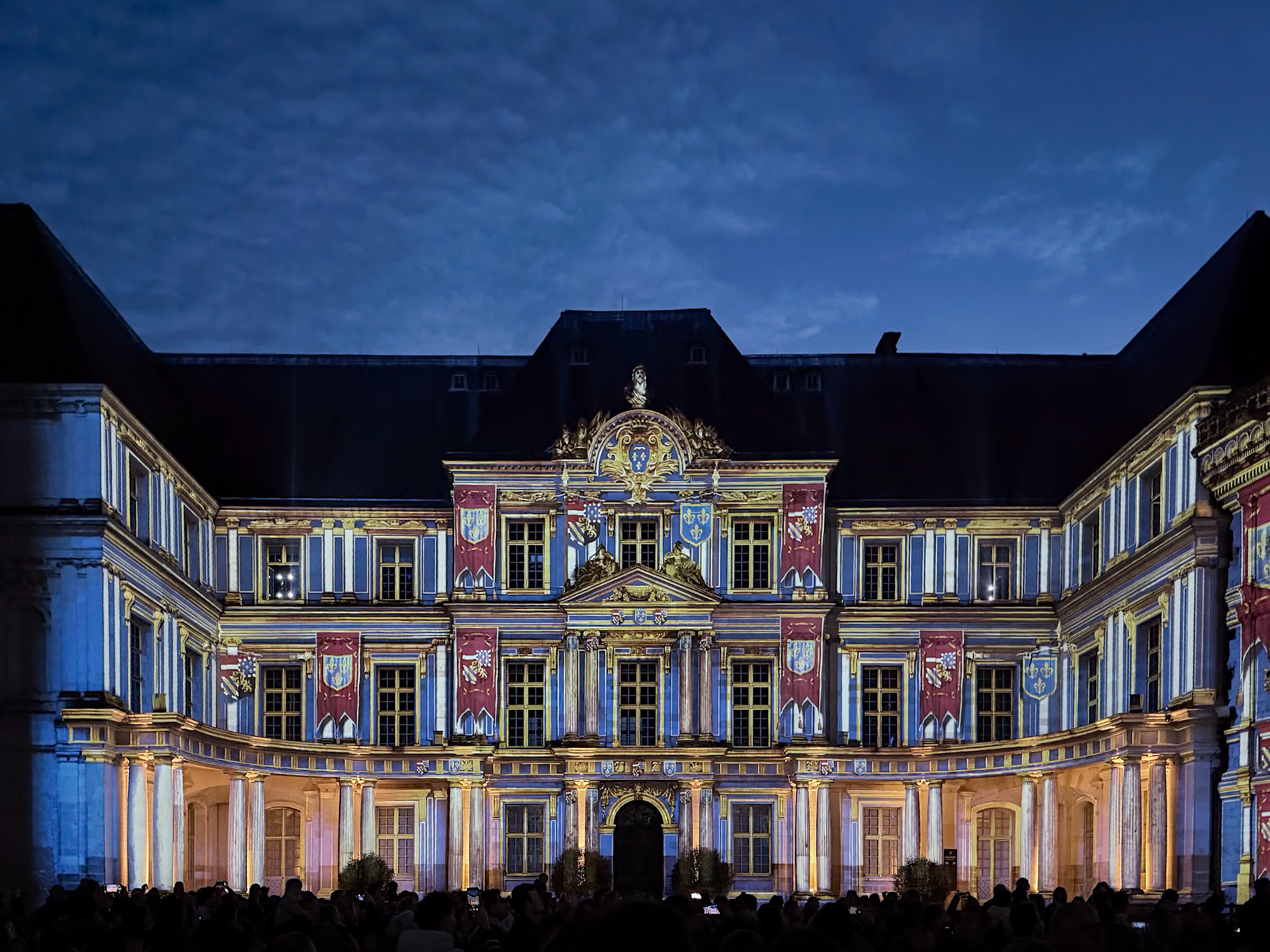
Château royal de Blois at night
Louis XII Wing
Visitors enter the château through the Louis XII Wing, built between 1498 and 1503. Above the entrance stands an equestrian statue of Louis XII, a 1857 copy by Charles Émile Seurre, created after the original was lost in 1792.
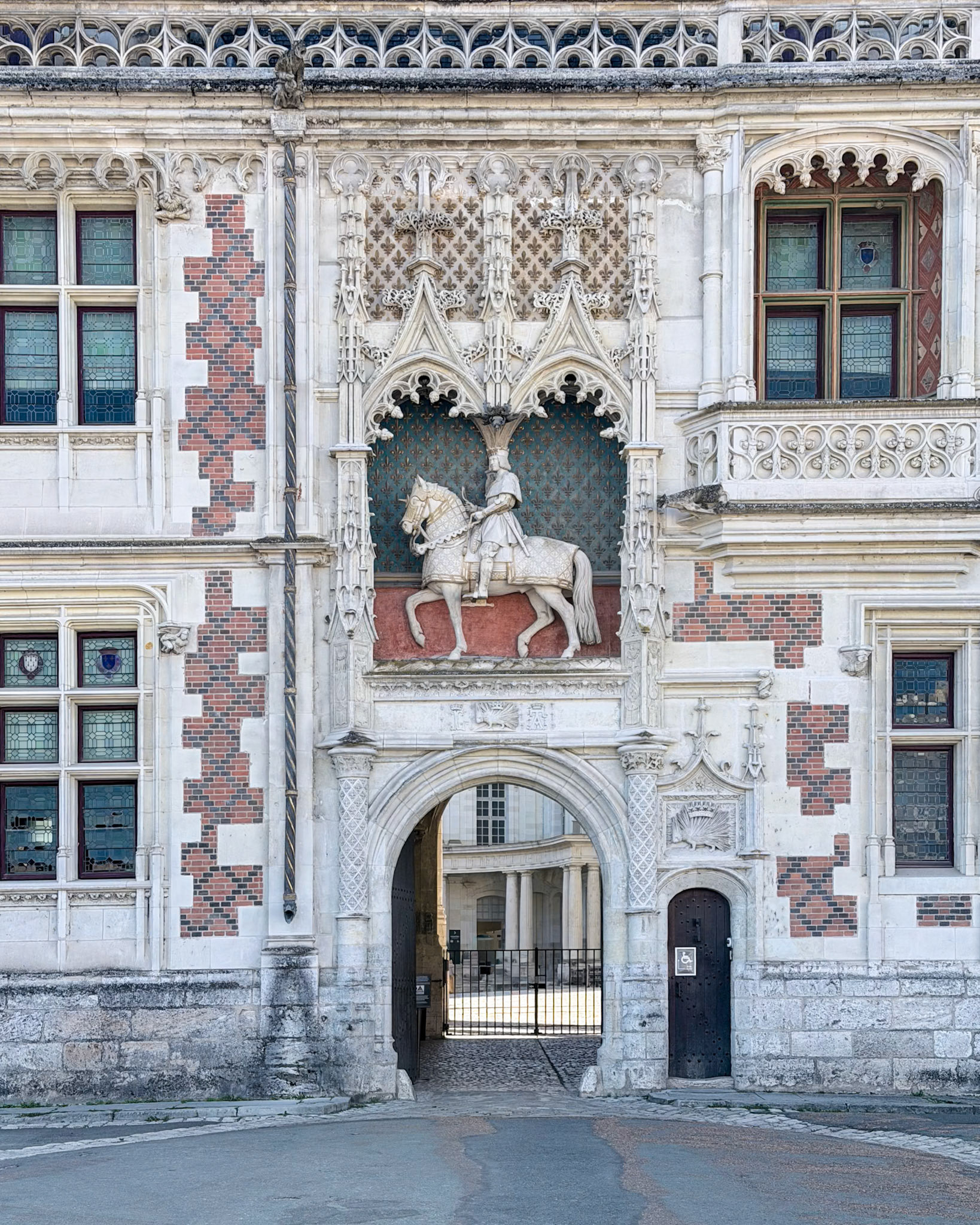
equestrian statue of Louis XII by Charles Émile Seurre
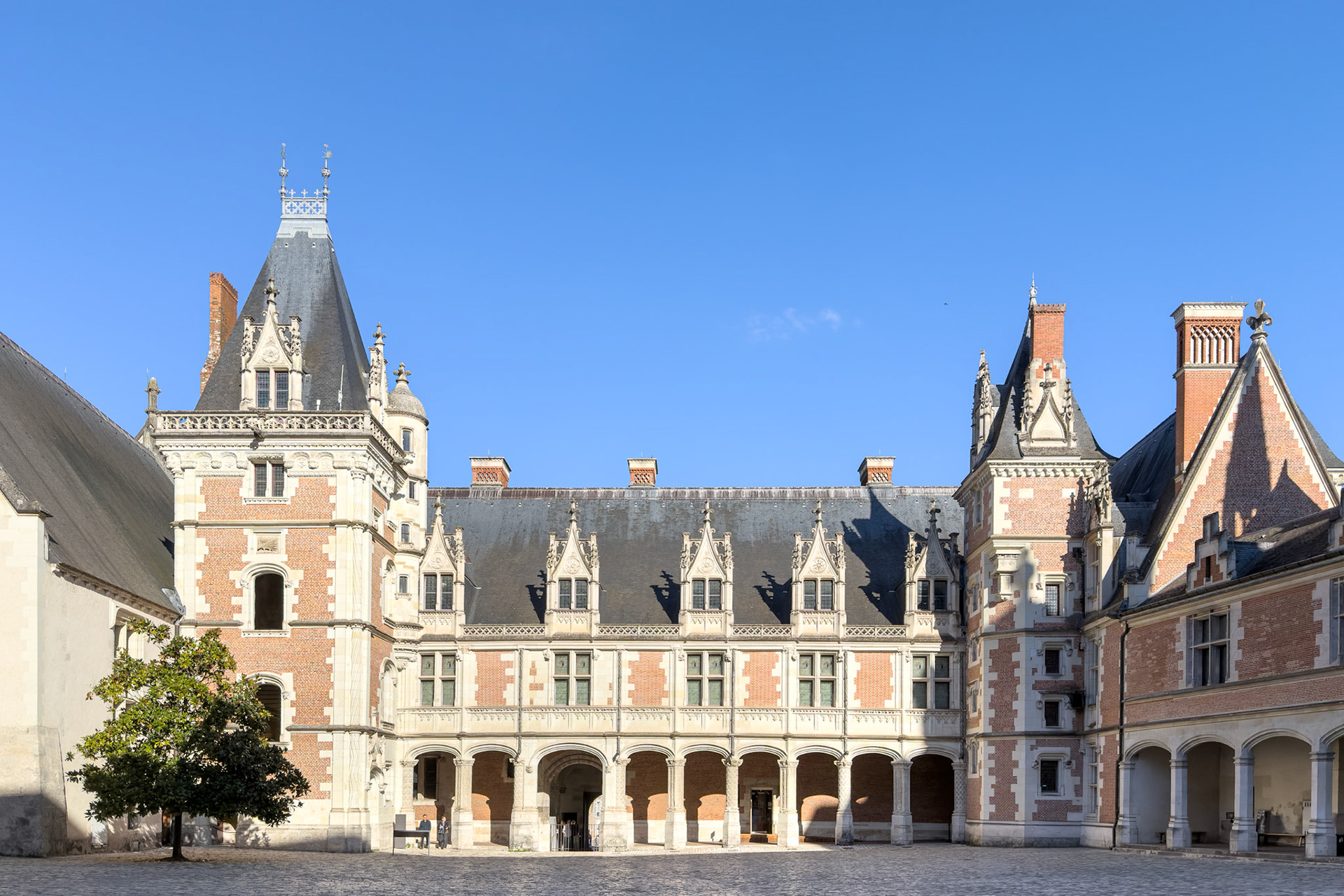
Since 1869, this wing has housed the Blois Museum of Fine Arts, whose eight galleries display paintings, sculptures, and decorative arts from the 16th to the 19th century, along with a notable collection of French and Flemish tapestries from the 16th and 17th centuries.
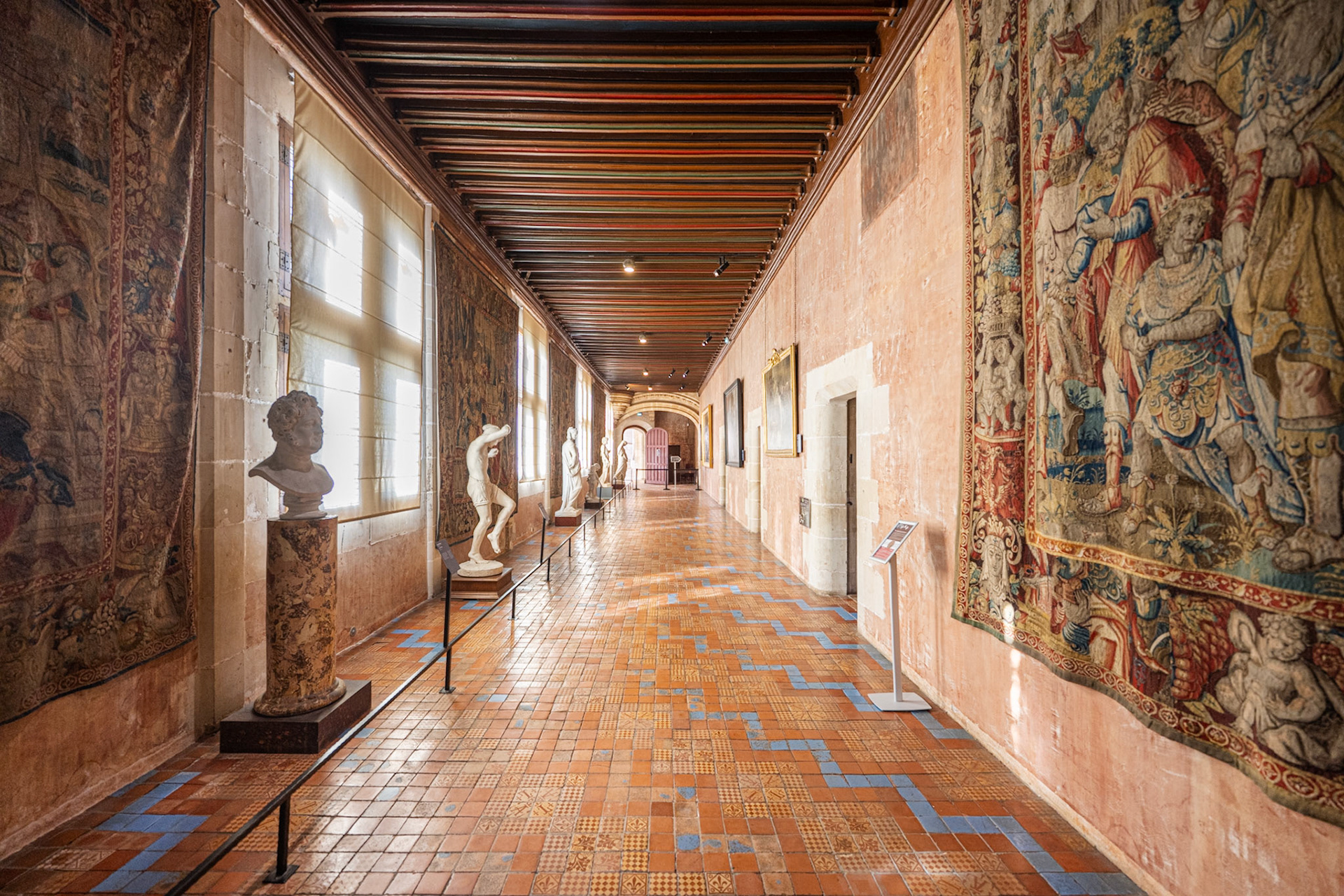
Blois Museum of Fine Arts
The Salle des États, built in 1214 under Count Thibaut VI is the oldest surviving Gothic civic hall in France. Originally used as a courtroom by the counts of Blois, it later hosted the Estates General in 1576 and again in 1588. Located at the northern end of the François I Wing, the timber-lined hall measures nearly thirty by eighteen meters. Much of the current interior appearance reflects the 19th-century work of Félix Duban, who restored the hall between 1861 and 1866, creating a painted scheme inspired by 13th-century colour traditions, including the roughly 6,720 fleurs-de-lys on the panelling.

salle des états

salle des états
François Ier Wing
The François Ier Wing introduces full Renaissance architecture to the château. Built in the early 16th century, it is best known for its monumental external staircase whose openwork structure and richly detailed reliefs exemplify the new vocabulary brought from Italy. Its façades combine classical motifs and symbolic emblems of François Ier, including the salamander, which appears throughout the decorative program.
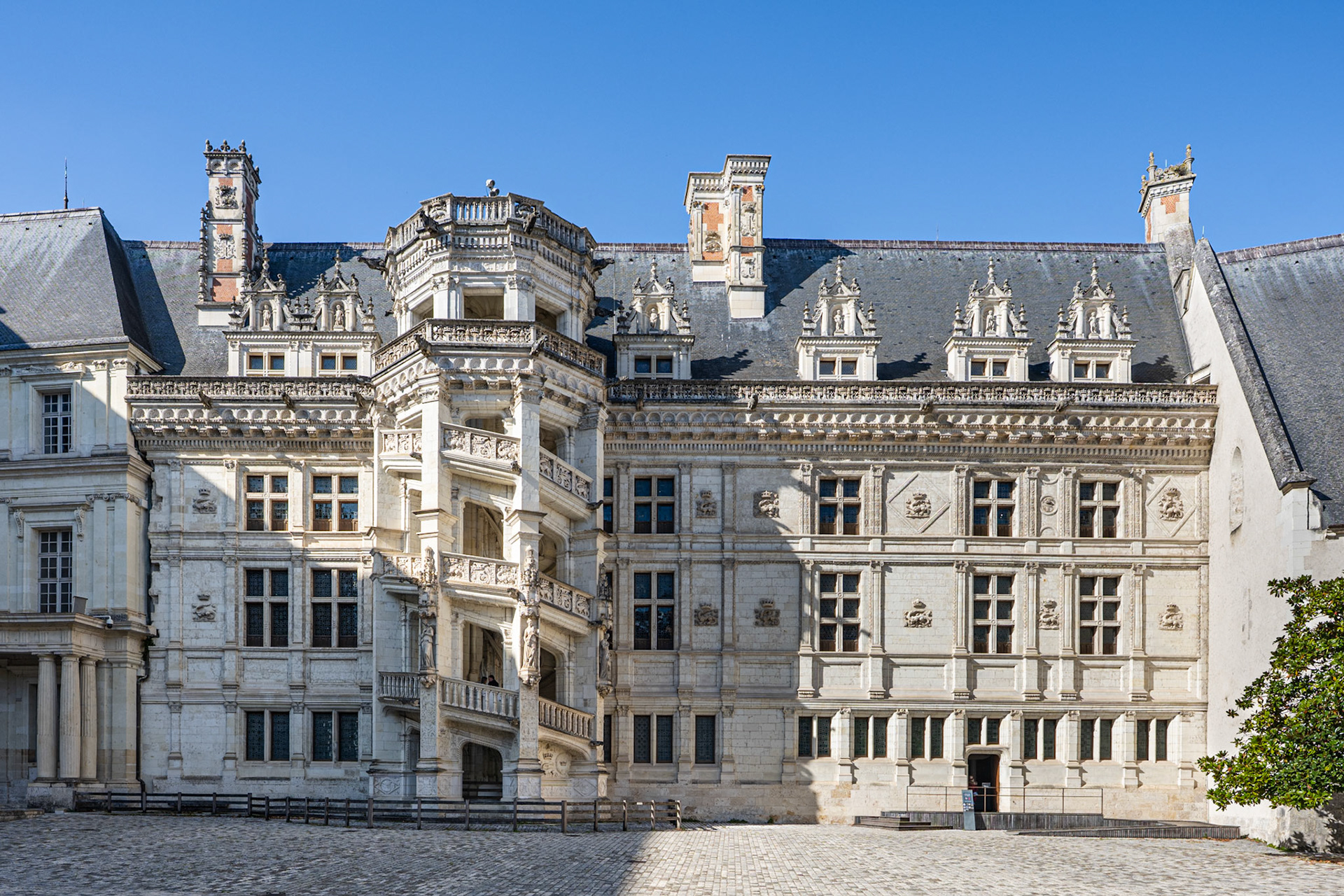

The first floor contains the former apartments of the queen. Among them is the Queen’s Gallery, paved with a distinctive pattern of blue, white, and yellow glazed terracotta tiles created by Félix Duban after a 15th-century model. The most notable room is Catherine de Médicis’ studiolo, whose original 16th-century wooden panels conceal four secret cupboards operated by a hidden pedal. These compartments were used to display precious objects and books.

Queen’s Gallery

studiolo
The Queen’s Chamber, where Catherine de Médicis died on 5 January 1589, and a wood-panelled oratory complete this floor.
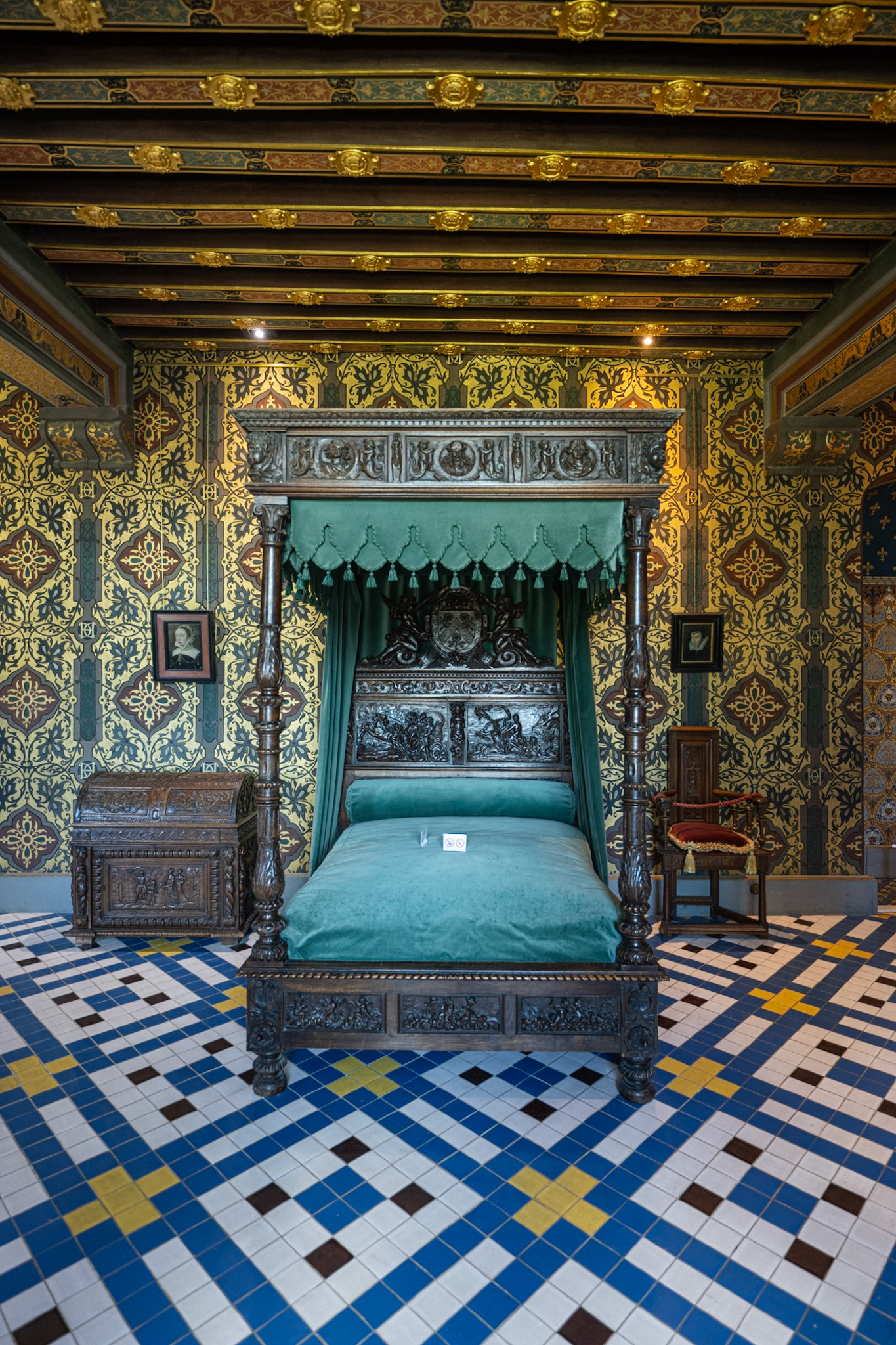
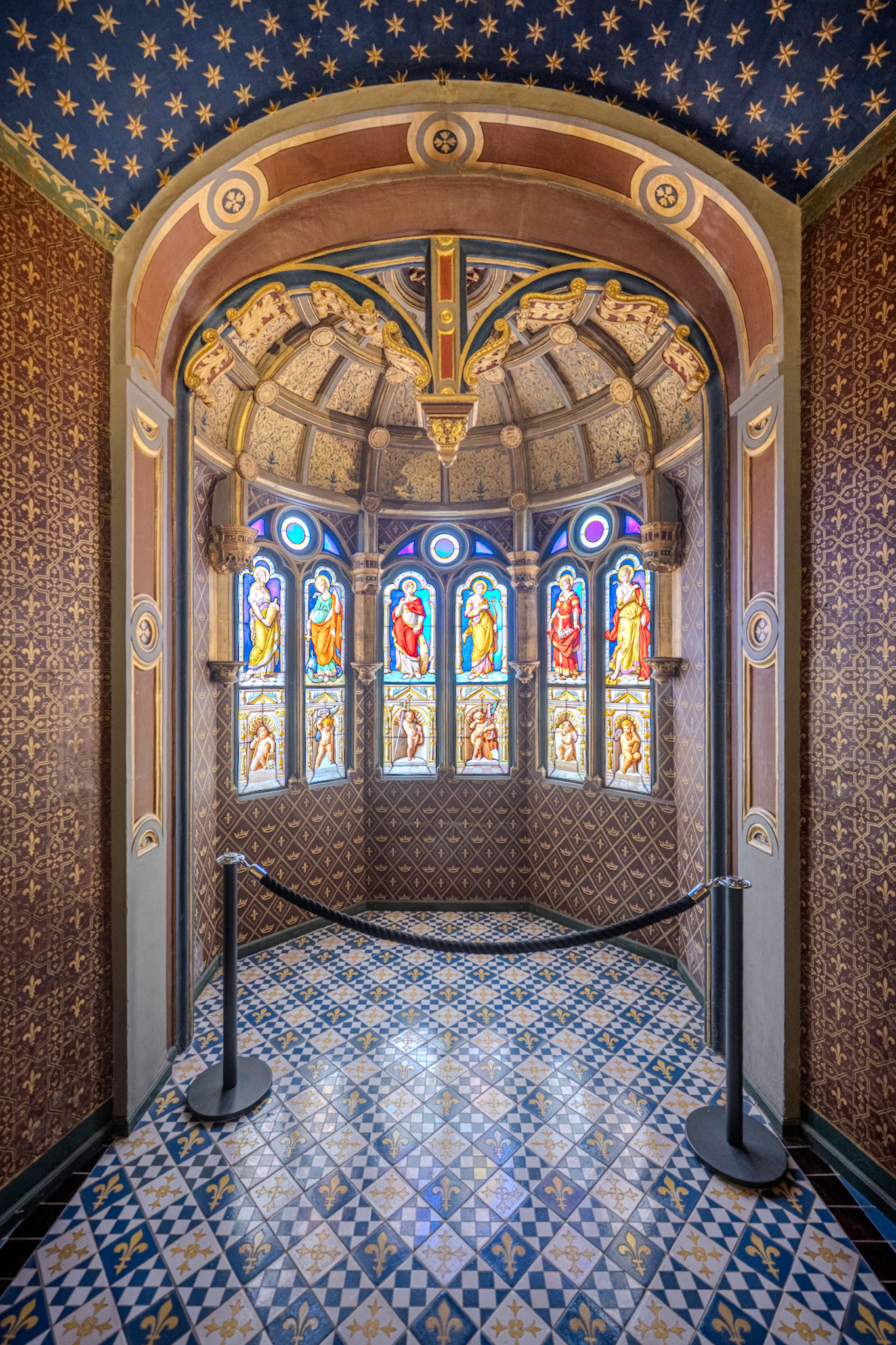
Gaston d’Orléans Wing
The Gaston d’Orléans Wing marks the château’s turn toward classical architecture. Commissioned from French architect François Mansart, its construction began in 1635 but was halted just three years later due to a lack of funds. Positioned at the far end of the courtyard, opposite the Louis XII Wing, it replaced several earlier buildings. The central section presents a composition of three bays, where the Doric, Ionic, and Corinthian orders are stacked in perfect symmetry. At its core, Mansart created a monumental staircase, topped by a double-shell dome and embellished with allegorical sculptures attributed to Simon Guillain and Michel Anguier.

Aile Gaston d’Orléans
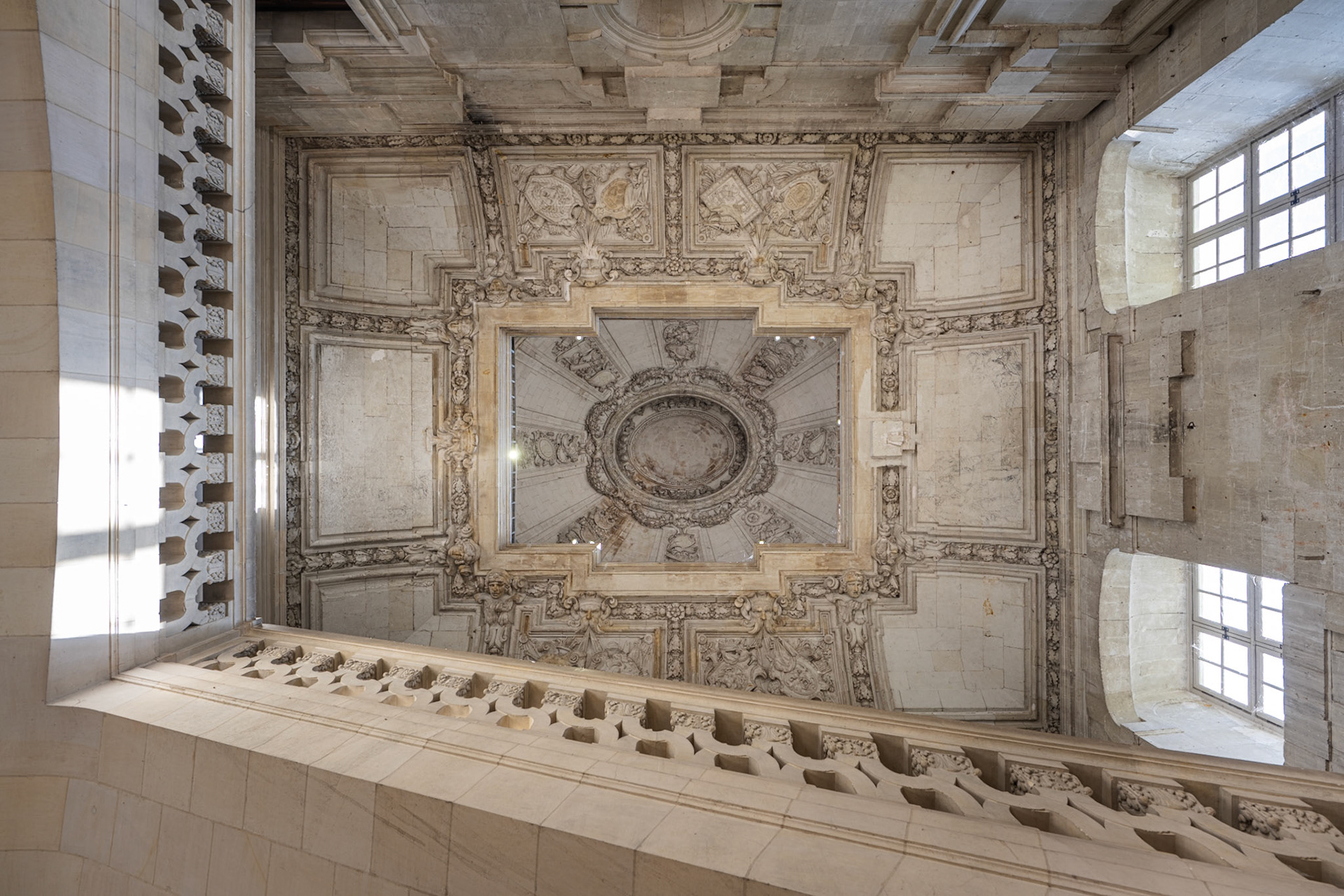
monumental staircase
Chapel of Saint-Calais
The Chapel of Saint-Calais is the oldest structure within the castle complex. Originally founded by Count Thibaut III of Blois in 854, it was reconstructed in the late 15th century under Louis XII in the Flamboyant Gothic style. Dedicated to Saint Calais, bishop of Anjou, the chapel stands apart from the main courtyard. Of the 16th-century chapel, only the Gothic choir with its lierne-and-tierceron vaults remains, as the nave was demolished in 1635 by Mansart during the construction of the Gaston d’Orléans wing, reducing the chapel’s original length by about half. The current façade, designed by Félix Duban and Jules de La Morandière, dates from 1870. Damaged during the Second World War, the chapel lost its stained-glass windows, which were replaced in 1957 by Max Ingrand with modern panels depicting figures from local history, including Joan of Arc and Charles of Blois.
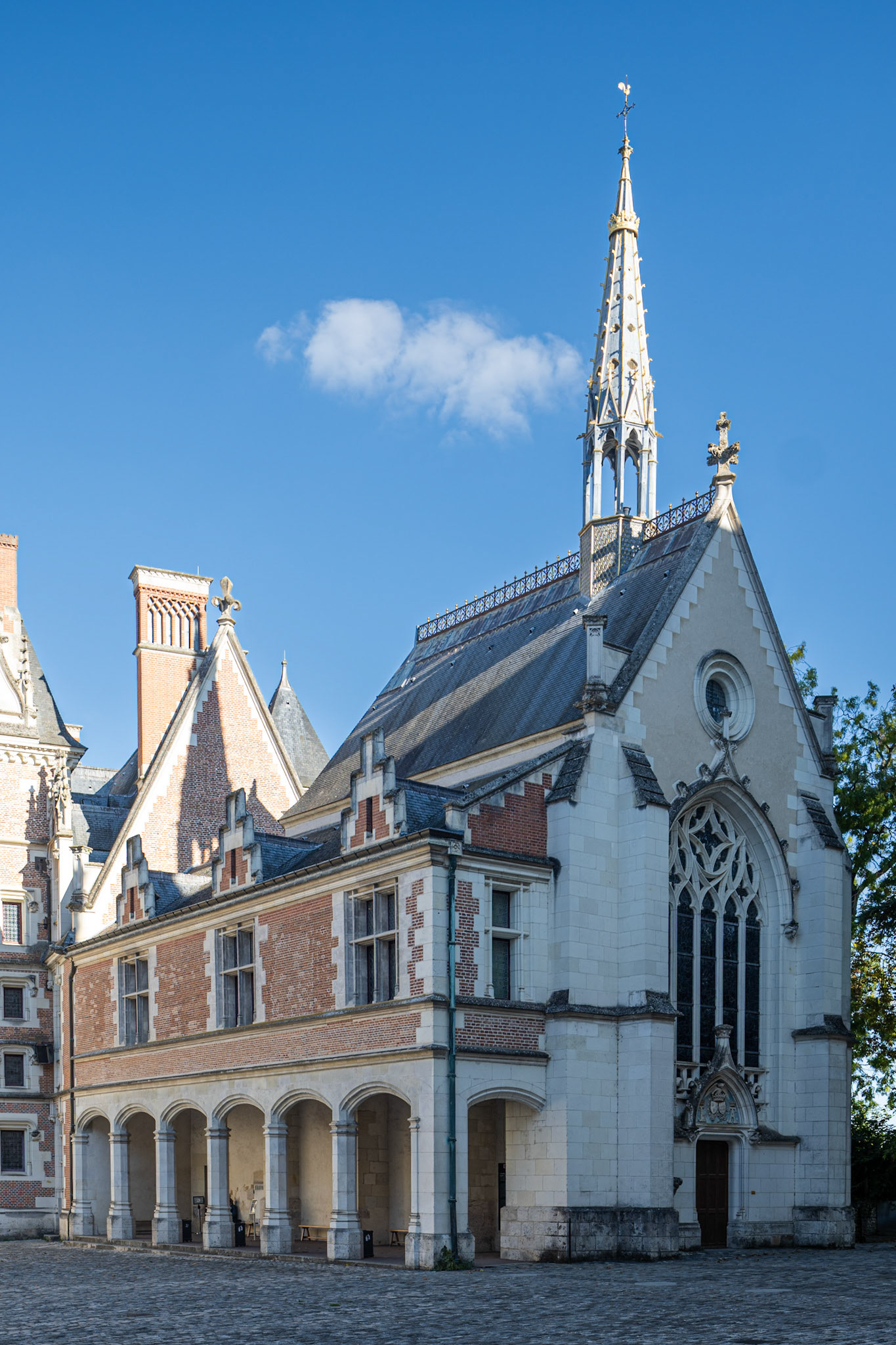
Chapel of Saint-Calais - exterior
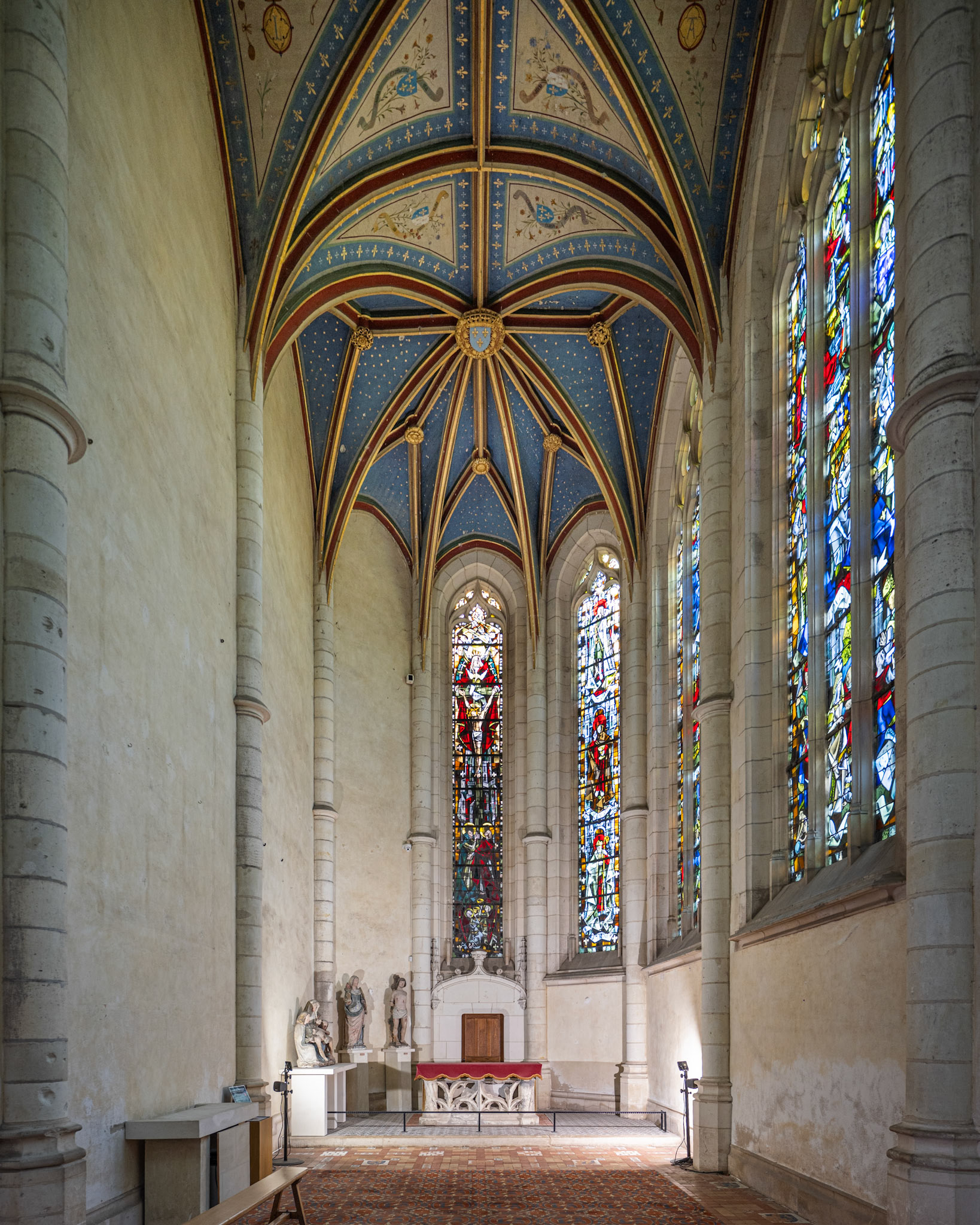
Chapel of Saint-Calais - interior

Chapel of Saint-Calais - windows
You may also like